Learn how to clean, sanitize, condition, and seal your butcher block countertops in a few simple steps using this one ingredient everyone has on hand.
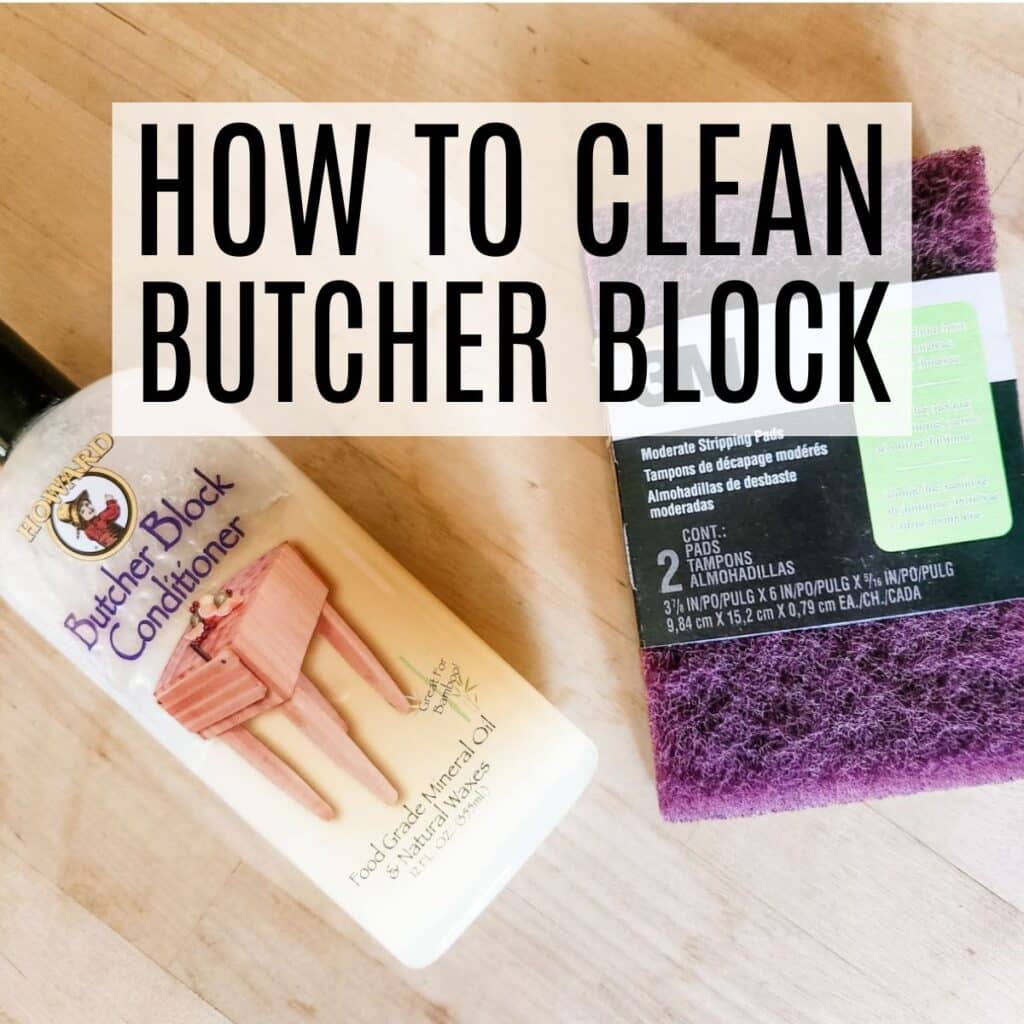
Two years ago we added an island to our kitchen. Instead of doing a granite or marble countertop, we decided to do a butcher block countertop. It was very reasonably priced, and it looks great.
I was a little unsure about caring for butcher block but it has been easy. Every couple of months, I take some time to really clean and condition them.
You may also want to take this time to use my tips for cleaning wooden cutting boards. I am all about easy, so you will love how simple the process and ingredients are!
What You'll Need
- Vinegar - I used white vinegar.
- Spray Bottle
- Sanding Paper or Pad
- Sealer & Conditioner (I like this stuff on Amazon)
- Rag or cloth - Make sure it's lint free like a microfiber towel.
How to Clean a Butcher Block
STEP 1: Clean everything off the top and wipe them down with a damp cloth.
STEP 2: Lightly sand the butcher block to remove stains in the direction of the wood grain.
I recommend using a very light grit sandpaper or a scotch brite sanding pad. I use this one from Amazon. You can see below I had marks across my butcher block where I blew a candle out and the soot went everywhere.
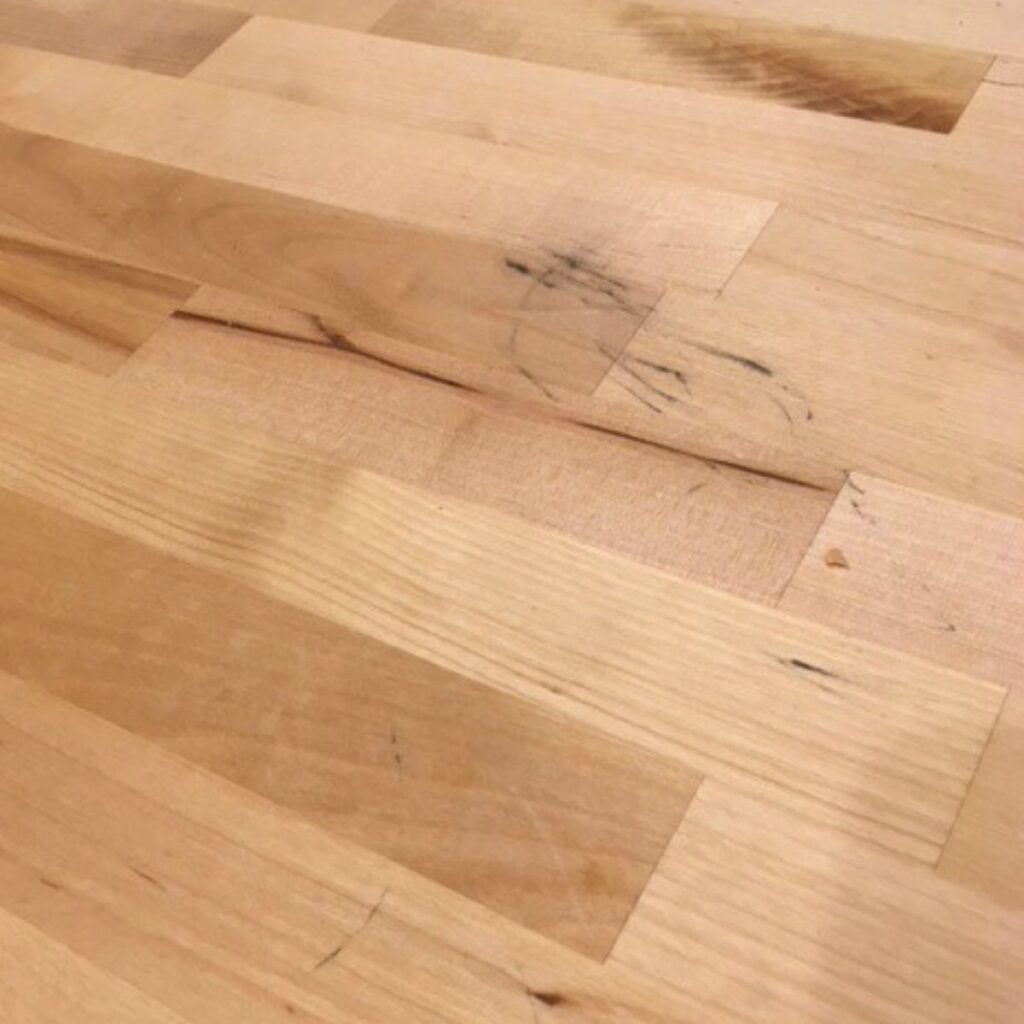
If you have food stains, you may need to sand a little harder in the area to remove them.
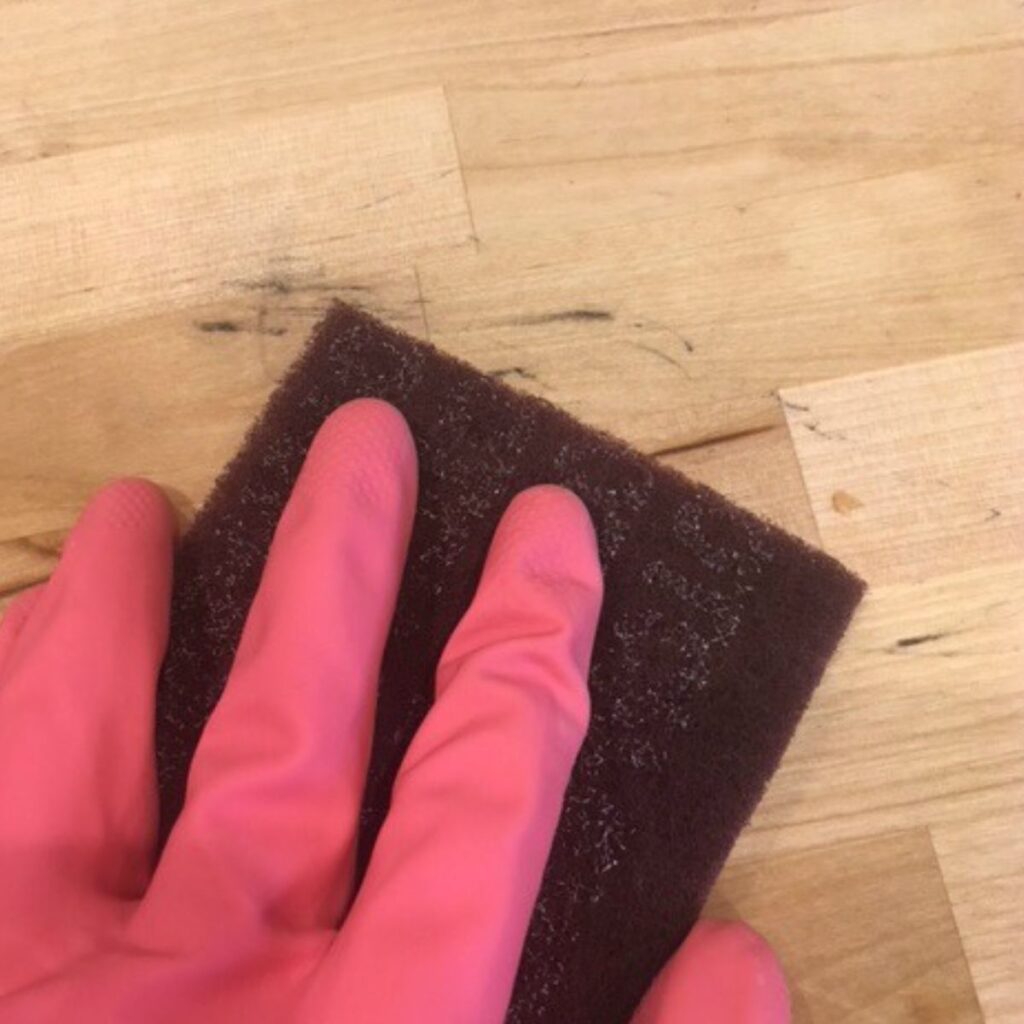
STEP 3: Wipe the butcher block with a damp cloth to remove the dust.
STEP 4: Fill up a spray bottle with a 50/50 mix of water and vinegar (I sometimes add a small squirt of dawn dish soap). Then spray down the butcher block with the mixture and wipe it off. The vinegar mix will help kill off any germs or bacteria that are on your countertops.
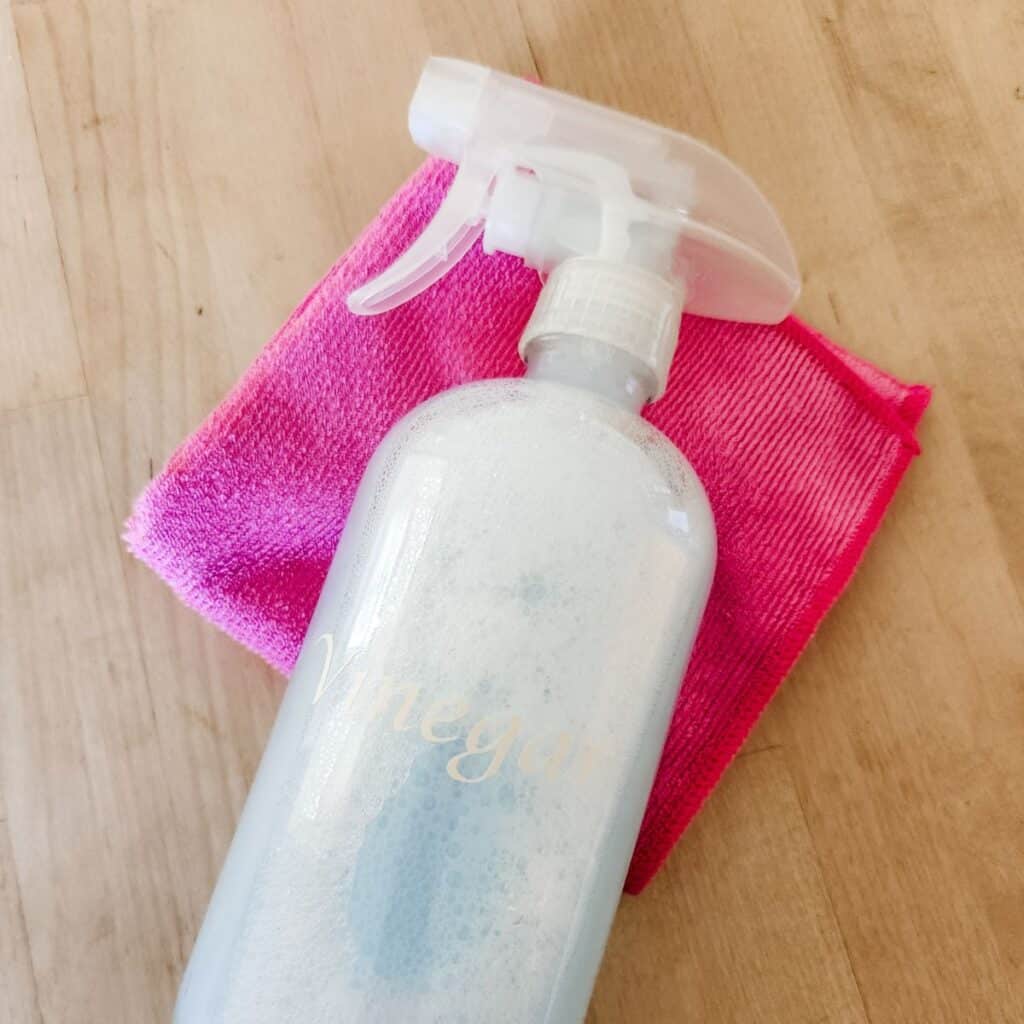
STEP 5: Let your countertops dry completely. This will take about 15-30 minutes.
STEP 6: Use a sealer to condition the wood. It also helps to protect it. Some choose to use food grade mineral oil instead because that is what they have on hand. This method works well too.
You can use any brand but I really like this stuff on Amazon. I have been using it for the last couple of years and it works great.

Free Weekly Cleaning Printable
Clean your home in under 30 minutes a day with this free Weekly Cleaning printable!
Warm the conditioner in a hot bowl of water. This makes it work the best.
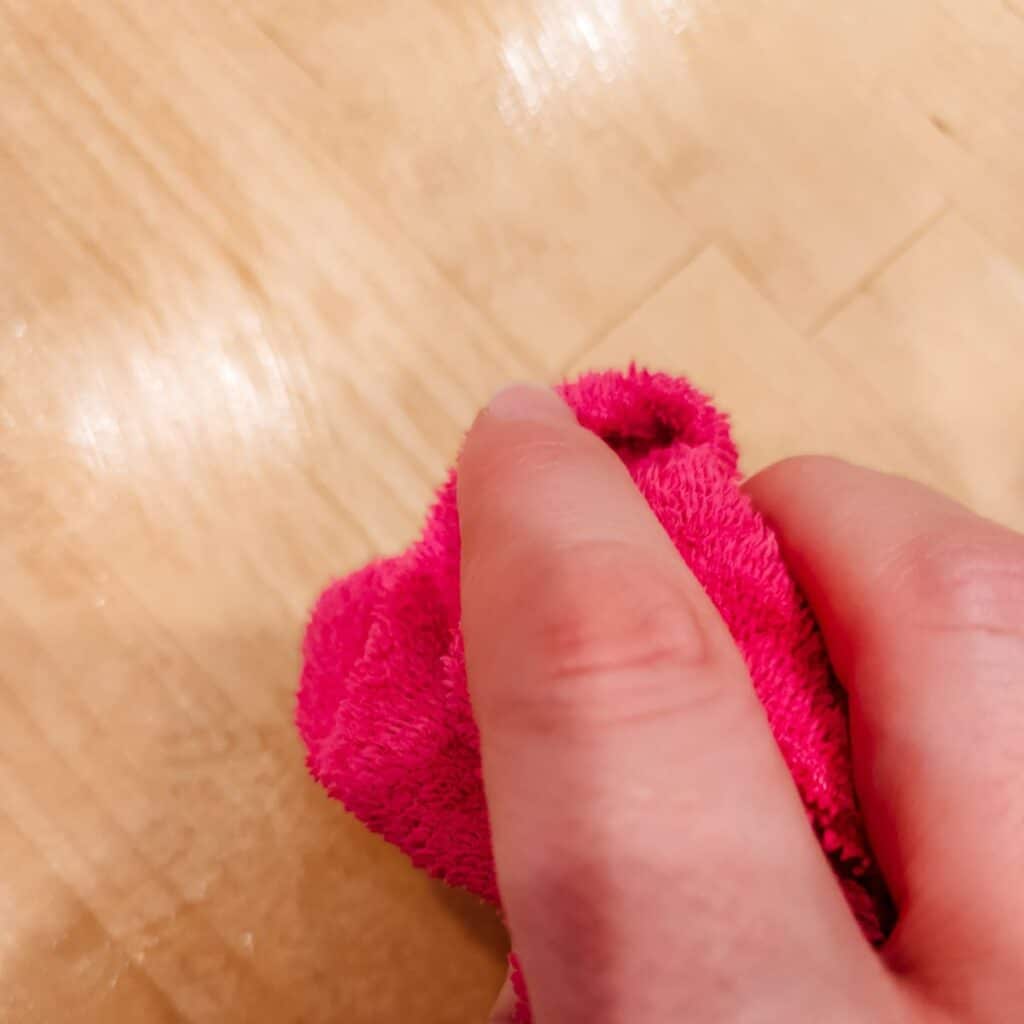
Pour the conditioner over the countertops. Use a lint-free rag to work the conditioner into the butcher block going with the grain. Make sure there is plenty of conditioner so it can really soak into the wood.

STEP 7: Set a timer for 10 minutes and let the conditioner soak on the wood. After 10 minutes, check to see if any more needs to be added. If so, set a timer for another 10 minutes.
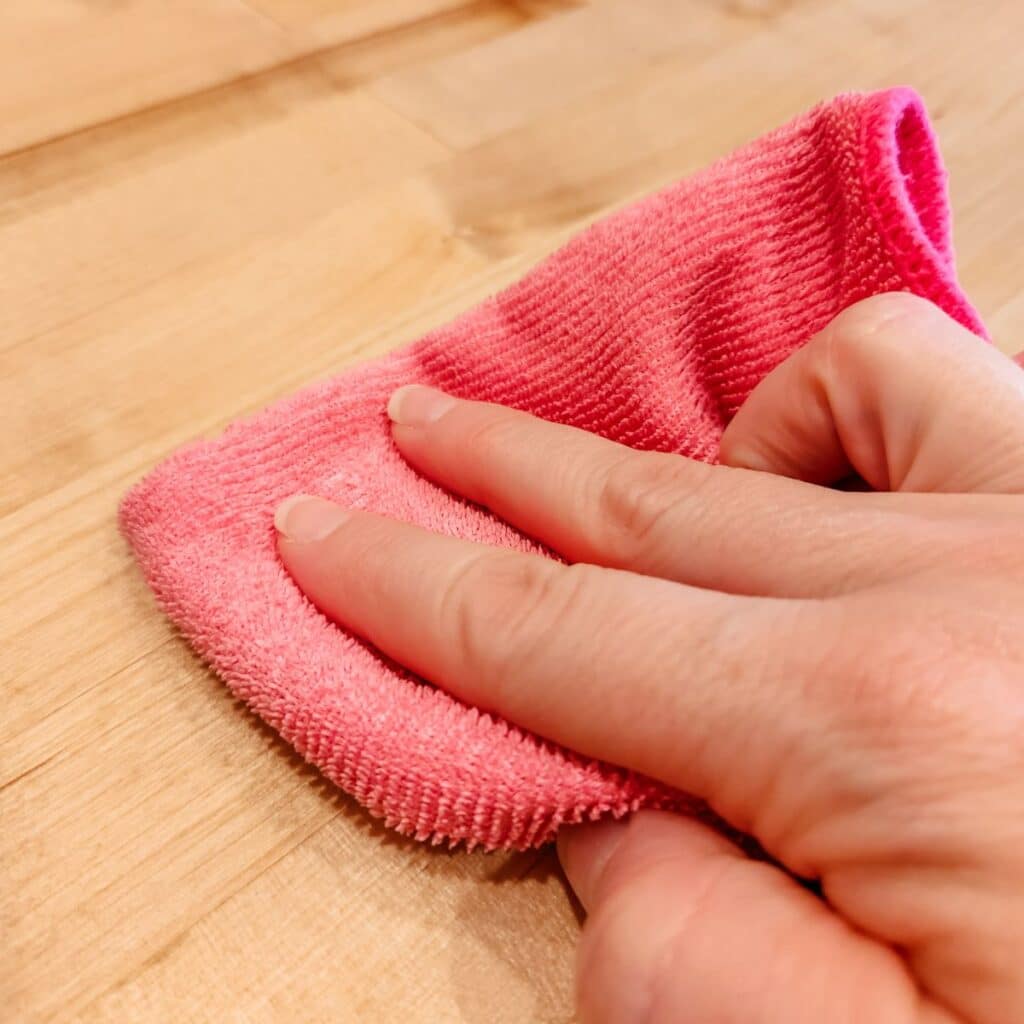
STEP 8: Use a clean lint-free cloth to wipe away any excess conditioner. Your butcher block countertop will look great and stay protected from spills.
How Often Should You Clean Butcher Block?
Whenever your butcher block starts looking dry you should repeat this process, usually about every few months. These simple tips will keep your countertops looking great.
Do You Have to Sand When Cleaning?
This step is really for surfaces that are stained. You should also sand the block if notice uneven wear spots. This occurs when you use one part of the butcher's block more than others.
If you clean more often, you may not have stains and can skip the sanding process.
Common FAQs
Yes. Even though Clorox is a known brand for their bleach, the cleaning wipes do not contain bleach and can be used safely on wooden countertops.
To maintain a wooden butcher block and keep it in good condition, follow these guidelines:
Cleaning: Clean the butcher block regularly with a mild dish soap and warm water solution. Use a damp cloth or sponge to wipe the surface, then rinse with clean water. Avoid excessive moisture and do not soak the wood. Dry the butcher block thoroughly after cleaning to prevent warping or mold growth.
Avoid harsh chemicals: Avoid using harsh chemicals, bleach, or abrasive cleaners on the butcher block as they can damage the wood and strip away its natural oils.
Seasoning: Periodically, you should season the butcher block to keep the wood moisturized and protected. Food-grade mineral oil or specialized butcher block conditioner can be used for this purpose. Apply a thin, even coat of oil or conditioner to the clean and dry surface of the butcher block. Allow it to soak in for a few hours or overnight, then wipe away any excess with a clean cloth. Seasoning helps prevent the wood from drying out and helps maintain its natural beauty.
Preventing moisture: Avoid excessive exposure to moisture, as it can cause the wood to swell, warp, or develop mold. Promptly wipe up spills and avoid leaving wet items or standing water on the butcher block. Use trivets or hot pads to protect the surface from hot pans and pots.
Cutting board use: Use cutting boards or mats when cutting or chopping on the butcher block to protect the wood surface from deep scratches and knife marks.
Sanding and refinishing: Over time, the surface of the butcher block may develop scratches, stains, or signs of wear. If needed, you can lightly sand the surface with fine-grit sandpaper to remove imperfections and then reapply a fresh coat of food-grade mineral oil or butcher block conditioner to restore its appearance.
Remember to consult the manufacturer's instructions and recommendations specific to your butcher block countertop, as maintenance requirements may vary depending on the type of wood and finish used.
The frequency of oiling a butcher block can vary depending on the type of wood, how often it is used, and environmental conditions.
As a general guideline, it is recommended to oil a butcher block every few months to keep it moisturized and protected.
Here are some factors to consider before oiling the block:
Visual inspection: If you notice that the wood appears dry, dull, or starts to absorb water more readily when it comes into contact with liquids, it may be time to oil the surface.
Frequency of use: When using butcher block heavily or for daily food prepping, it may require more frequent oiling. Constant cutting and cleaning can strip away the natural oils, making it necessary to replenish them more often.
Environment: Environmental factors such as humidity levels and exposure to sunlight can affect the wood's moisture content. In dry climates or during winter months when indoor heating is used, the wood may dry out faster and require more frequent oiling.
Product recommendations: Follow any specific recommendations or instructions provided by the manufacturer or the supplier of the butcher block. They may provide guidelines on oiling frequency based on the type of wood and finish used.
Keep in mind that over-oiling can lead to a sticky or greasy surface, so it's important to apply oil sparingly and wipe away any excess.
Additionally, it's always a good idea to consult the manufacturer's guidelines for your specific butcher block to ensure proper maintenance and care.



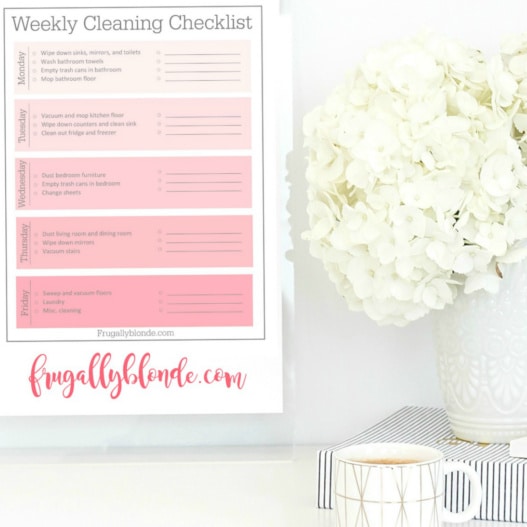
Leave a Reply